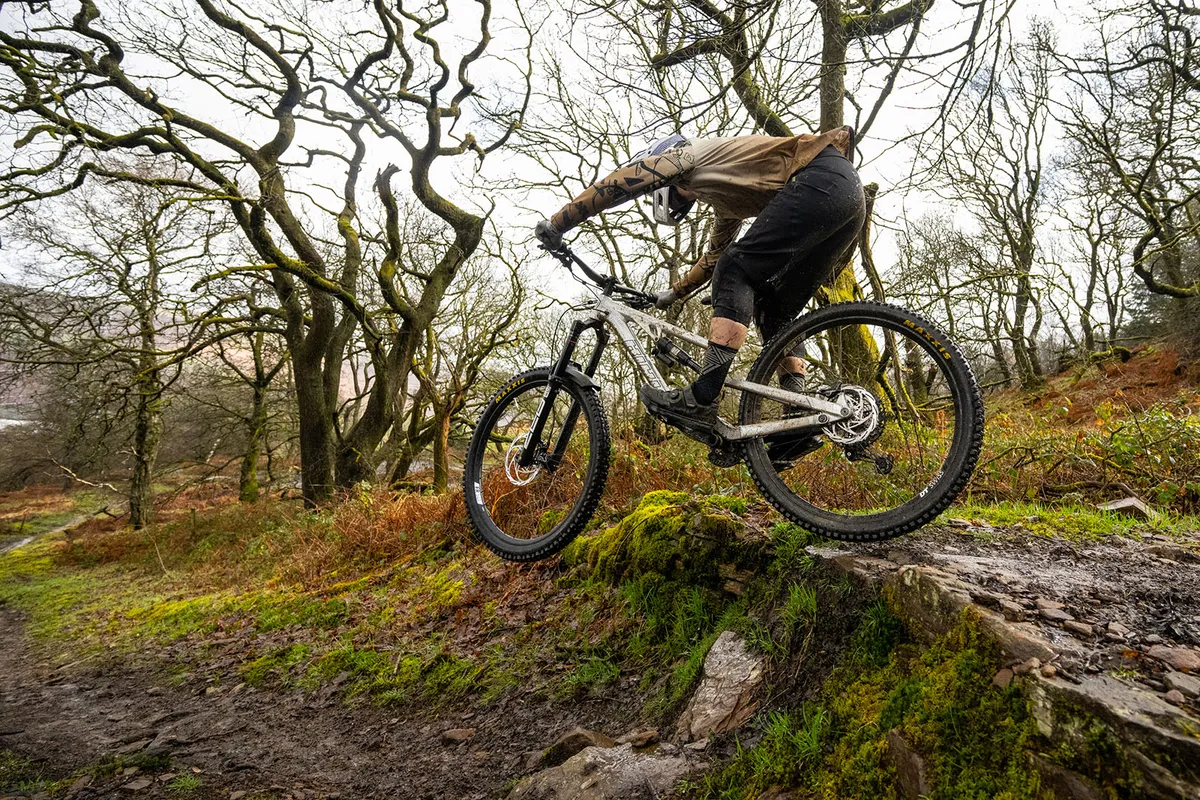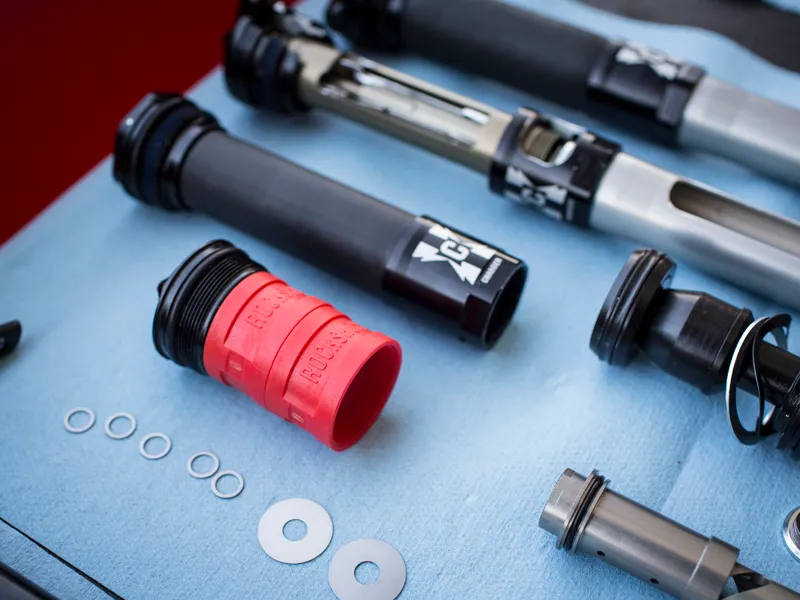With so many knobs, dials and valves, it can be difficult to know where to start with setting up your suspension – and many people get the absolute basics wrong.
Beyond setup, there are other common mistakes riders make.
If you’re new to mountain biking – or just need a refresher – these essential tips will help you avoid such common suspension mistakes to get the most from your bike.
1. Setting sag incorrectly
Setting your sag is the first and most important suspension setup step.
Sag is the amount of suspension travel a bike uses when it’s compressed under the weight of the bike and rider.
Sag enables the wheels to move down and away from the bike when the wheels enter thin air when you ride off a drop or over a hole.
This creates traction and gives the compression damping space to retard the speed at which the suspension moves.
If this sounds important, that’s because it is!
Suspension is effective because it's designed to keep the wheels in contact with the ground as much as possible, offering optimal and consistent grip between the tyres and the ground.
If the spring is too stiff, contact with the ground will be compromised.
But what about too much sag?
Too much sag means the spring is too soft. The bike will be using too much suspension travel, meaning that, at best, the suspension will feel sluggish and unresponsive.
The bike’s dynamic geometry – its shape when being ridden – will not be optimal.
At worst, this can lead to dangerous handling, pedals striking the floor and damage to the suspension components.
So how much sag is the right amount?
Suspension and frame manufacturers will tell you what sag is optimal for their products.
But as a general rule, you’re usually going to want around 25 per cent for front suspension and around 30 per cent for rear suspension.
Different amounts of travel, riding style, riding discipline and personal preference will all affect these amounts.
But if you start here, you can go softer or firmer from this baseline, once you’re used to how these settings ride.
Air suspension usually uses a shock pump and a Schrader valve to change the suspension pressure. You can keep track of what pressure is inside the air spring with a pressure gauge.
Coil suspension requires the fitting of a firmer or softer spring in order to change the sag significantly. Changes to the preload on the coil spring can often be used to make small changes.
2. Imbalanced suspension

If you have a full-suspension bike, the front and rear suspension systems need to be set up together.
If one end of the bike is firmer or faster – or, conversely, softer or slower – than the other, it can lead to strange handling characteristics.
The bike's geometry is affected by where the suspension sits in the travel, both at rest (static geometry) and when riding (dynamic geometry).
Therefore, if the front and rear suspension aren’t set up to work harmoniously, the bike’s dynamic geometry can look and feel very different from its static geometry.
The best antidote to this is to follow the manufacturer’s recommended settings.
An even better solution is to get your suspension set up by a professional, who can take you on the trails and watch how your bike performs underneath you.
3. Wrong rebound speed

Rebound speed can be tuned according to whether you’re after maximum speed on the trail, or what feels comfortable.
There is a window here though and not every conceivable rebound speed can give optimal (or even safe) handling.
Broadly speaking, the rebound-damping rate dictates the speed at which suspension will return to the sag point.
Rebound damping rates should be matched to the spring rate of the suspension: a stiffer spring will try to extend more forcefully than a softer one, and therefore will need more resistance from the suspension's hydraulic rebound damping than a softer one.
If the rebound is set too fast, your suspension can feel like a pogo stick, as if it’s trying to throw you back into the air after a compression.
If the rebound is too slow, the suspension can pack down. This means it won’t return to the sag point before your bike hits the next bump, getting steadily lower with every passing bump on a rough trail.
Incorrectly set rebound damping will, at best, reduce comfort and speed and, at worst, make the bike dangerous and unpredictable to ride.
Setting the right rebound-damping rate means the suspension should quickly, but not aggressively, return to the sag point.
4. Too many or too few volume spacers

Manufacturers of air springs now commonly offer volume spacers – or ‘tokens’ – which take up space inside an air spring’s chamber.
Adding more volume spacers means the air volume inside the air spring is smaller.
Reducing the volume in an air spring means the pressure inside the spring increases more quickly during the suspension’s travel.
This means the resistance at the end of the stroke will be greater, even if the suspension pressure is set the same when the suspension is at rest (extended).
Too many volume spacers will mean it can’t reach full travel, feeling harsh and resistant when deep in the travel. Not enough volume spacers will mean the suspension bottoms out too easily, even when at the correct sag setting.
The correct number of volume spacers is subjective and dependent on how hard you ride, the type of riding you do, and your preferences.
Note: it can be tempting to wind on more compression damping to increase the resistance to bottoming, but a key difference between them is that compression damping affects every part of the travel, whereas decreasing the air-spring volume makes the most difference toward the bottom of the travel.
5. Not enough maintenance

Fork and shock servicing is essential.
Suspension involves things moving – and moving things need to be maintained because if they aren't, they’re going to wear out.
If possible, stick to the manufacturer's recommended maintenance schedule for your fork and shock to keep them working as they should.
Not servicing forks and shocks on time leads to sticky suspension that won’t work at its best, and can even lead to coatings and internal parts wearing out.
Getting your fork and shock serviced on time means that, with fresh oil and new seals, your suspension will have the least friction possible.
Any dirt present before the service won’t be able to work as grinding paste and any issues will have been spotted before they develop further.
